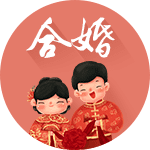万圣节南瓜灯的由来英文版
发布时间:2016年05月31日 17:24:12 作者:网络
南瓜灯是万圣节的必要元素之一,作为一个外来节日万圣节在近些年中西方文化交流影响下已经渐渐地被广大中国人所了解和接纳,甚至有不少人已经过起了“洋节”那么,你知道这个节日是怎么来的吗?一起去看看吧。
南瓜灯的由来
Halloween, or Hallowe’en, is a holiday celebrated on the night of October 31. Halloween activities include trick-or-treating, ghost tours, bonfires, costume parties, visiting "haunted houses", carving Jack-o'-lanterns, reading scary stories and watching horror movies. Irish immigrants carried versions of the tradition to North America in the nineteenth century. Other western countries embraced the holiday in the late twentieth century. Halloween is celebrated in several countries of the Western world, most commonly in the United Kingdom, the United States, Canada, Ireland, Puerto Rico, Japan, New Zealand, and occasionally in parts of Australia. In Sweden the All Saints' official holiday takes place on the first Saturday of November.
Halloween has its origins in the ancient Celtic festival known as Samhain. The festival of Samhain is a celebration of the end of the harvest season in Gaelic culture, and is sometimes regarded as the "Celtic New Year". Traditionally, the festival was a time used by the ancient pagans to take stock of supplies and slaughter livestock for winter stores. The ancient Gaels believed that on October 31, now known as Halloween, the boundary between the alive and the deceased dissolved, and the dead become dangerous for the living by causing problems such as sickness or damaged crops. The festivals would frequently involve bonfires, into which bones of slaughtered livestock were thrown. Costumes and masks were also worn at the festivals in an attempt to mimic the evil spirits or placate them.
万圣节,是国际性节日庆祝10月31日。万圣节的活动包括糖果、鬼怪旅游,篝火,化装舞会,参观景点,雕刻火焰般双眼的-lanterns,阅读和看恐怖片的可怕的故事。爱尔兰移民带版本的传统到北美在十九世纪。其它西方国家接受了二十世纪后期的节日。万圣节是西方世界的几个国家,最常见的是在美国、加拿大、爱尔兰、波多黎各、日本、新西兰、英国,偶尔在澳大利亚的部分。在瑞典度假的所有圣徒的官员在11月的第一个星期六。
万圣节源自凯尔特人的萨温节。在古凯尔特人的信仰里,新的一年于11月1日开始,或称萨温节(Samhain)。正如比较短的白天象征新一年的开始,日落亦象征新一天的开始;所以每年收割的节日于10月31日晚上开始。不列颠群岛的德鲁伊教徒会燃点农作物作为祭品,而当他们围着火堆跳舞时,太阳季节便会完结而萨温 节随即开始。凯尔特人相信死亡之神Samhain在10月31日的晚上会和鬼一起重返人间,寻找替身。因此他们点燃火炬,焚烧动物以作为死亡之神的献礼。还会用动物的头或皮毛做成的服饰打扮自己,发出古怪的声音,使死亡之神认不出自己,避过灾难。这就是今天万圣节化妆舞会的由来。
Halloween (Halloween) (also known as Halloween, Halloween) in the 31 October each year, is the traditional festival of English-speaking world, mainly popular in North America, British Isles, Australia, Canada and New Zealand. Many public places and even the home yard, will the layout of a lot of decoration, such as various types of ghosts Yeah, pumpkin lights Yeah, there are black cats and witches broom and the like;Children will wear Halloween costumes every year is different, carrying a lantern to provide door to door to discuss sugar basket, saying it was "Trick or Treat "。
Halloween in the October 31 the night before, in fact, is to praise the fall festival, just like May Day holiday in the spring as a compliment. Ancient Gaul, Britain and Ireland, the priest - druid autumn a grand festival of praise,From midnight after Halloween until the next day, November 1 continued all day. In their view, their great god of death that night - Salman who will die that year summoned the ghost of all, these evil spirits are subject to care for the Livestock Health and punishment. Of course, as long as the thought of such a gathering of ghosts, was enough to make simple-minded fools who fight heart understanding of the gallbladder.So they lit the sky of fire, and close surveillance of these evil spirits. Today, throughout Europe, people have Halloween as enjoy slapstick, ghost story and a good opportunity to scare each other. So people are no longer just used to praise this Autumn Festival, but it turned into a real "Carnival." The facial makeup is the Halloween tradition of one of the programs.
万圣夜(Halloween)(又叫鬼节,万圣节前夜)在每年的10月31日,是英语世界的传统节日,主要流行于北美、不列颠群岛、澳大利亚、加拿大和新西兰。许多公共场所乃至居家院落,都会布置上很多装璜,诸如各式鬼怪 呀、南瓜灯呀、还有黑猫之类;孩子们会穿上每年不一 样的万圣节服装,拎着南瓜灯的提篓去挨家挨户地讨糖,说是“不给糖就捣蛋(trick or treak)”
万圣夜在10月31日的前一夜,其实是赞美秋天的节日,就好像五朔节是赞美春天的节日一样。古代高卢、不列颠和爱尔兰的祭司--德鲁伊德有一个赞美秋天的盛大节日,从万圣夜后午夜开始,直至次日11月1日持续整整一天。他们认为,在那天晚上他们伟大的死神--萨曼会把那年死去人的魂统统召来,这些鬼要受到托生为畜类的惩罚。当然,只要想到这种鬼魅的聚会,就足以令当时那些头脑简单的愚民胆战心谅的了。于是他们点起冲天的篝火,并严密监视这些鬼。如今在整个欧洲,人们都把万圣夜看作尽情玩闹、讲鬼故事和互相吓唬的好机会。于是人们不再把这节日仅仅用来赞美秋光,而是让它变成一场真正的“狂欢”。而脸谱化妆是万圣节传统节目之一。
Halloween
Halloween is an autumn holiday that Americans celebrate every year. It means "holy evening," and it comes every October 31, the evening before All Saints' Day. However, it is not really a church holiday, it is a holiday for children mainly.
Every autumn, when the vegetables are ready to eat, children pick large orange pumpkins. Then they cut faces in the pumpkins and put a burning candle inside. It looks as if there were a person looking out of the pumpkin! These lights are called jack-o'-lanterns, which means "Jack of the lantern".
The children also put on strange masks and frightening costumes every Halloween. Some children paint their faces to look like monsters. Then they carry boxes or bags from house to house. Every time they come to a new house, they say,"Trick or treat! Money or eat!" The grown-ups put treat-money or candy in their bags.
Not only children, but most grown-ups also love Halloween and Halloween parties because on this day,they can disguise themselves as personages or ghost as their imaginations will lead them. This bring them the satisfaction of being young.
万圣节前夕
万圣节前夕是美国人年年都会庆祝的秋季节日。它的意思是“神圣的夜晚”,在每年的10月31日,也就是万圣节前夜。但实际上这不是一个真正的宗教节日,而主要是孩子们的节日。
每年秋天蔬菜成熟可以食用的时候,孩子们就会挑出大个儿的橙色南瓜。然后在南瓜上刻上一张脸,把一根点燃的蜡烛放在里面。看起来就好像有人在向南瓜外面张望。这些灯就叫做“iack-o'-lantems”,意思也就是“杰克的灯”。
每年万圣节前夕孩子们还戴上奇怪的面具,穿上吓人的服装。有些孩子把脸刷成怪物。然后他们拿着盒子或袋子挨家挨户串门。每来到一个新房子他们就说:“不款待就捣乱!给钱还是吃的!”大人们就会把用来招待的钱或糖放在他们的袋子里了。
不仅孩子,许多成年人也喜欢万圣节前夕和万圣节前夕晚会。因为这一天他们可以根据自己的想象把自己装扮成名流。这会带给他们年轻的快感。
关于万圣节的故事
HALLOWEEN One story about Jack, an Irishman, who was not allowed into Heaven because he was stingy with his money. So he was sent to hell. But down there he played tricks on the Devil (Satan), so he was kicked out of Hell and made to walk the earth forever carrying a lantern. Well, Irish children made Jack's lanterns on October 31st from a large potato or turnip, hollowed out with the sides having holes and lit by little candles inside. And Irish children would carry them as they went from house to house begging for food for the village Halloween festival that honored the Druid god Muck Olla. The Irish name for these lanterns was "Jack with the lantern" or "Jack of the lantern," abbreviated as " Jack-o'-lantern" and now spelled "jack-o-lantern." The traditional Halloween you can read about in most books was just children's fun night. Halloween celebrations would start in October in every elementary school. Children would make Halloween decorations, all kinds of orange-paper jack-o-lanterns. And from black paper you'd cut "scary" designs ---an evil witch with a pointed hat riding through the sky on a broomstick, maybe with black bats flying across the moon, and that meant bad luck. And of course black cats for more bad luck. Sometimes a black cat would ride away into the sky on the back of the witch's broom. And on Halloween night we'd dress up in Mom or Dad's old shoes and clothes, put on a mask, and be ready to go outside. The little kids (children younger than we were) had to go with their mothers, but we older ones went together to neighbors' houses, ringing their doorbell and yelling, "Trick or treat!" meaning, "Give us a treat (something to eat) or we'll play a trick on you!" The people inside were supposed to come to the door and comment on our costumes. Oh! here's a ghost. Oh, there's a witch. Oh, here's an old lady. Sometimes they would play along with us and pretend to be scared by some ghost or witch. But they would always have some candy and maybe an apple to put in our "trick or treat bags." But what if no one come to the door, or if someone chased us away? Then we'd play a trick on them, usually taking a piece of soap and make marks on their windows. .And afterwards we would go home and count who got the most candy. One popular teen-agers' Halloween trick was to unroll a roll of toilet paper and throw it high into a tree again and again until the tree was all wrapped in the white paper. The paper would often stay in the tree for weeks until a heavy snow or rain washed it off. No real harm done, but it made a big mess of both the tree and the yard under it. One kind of Halloween mischief.
关于万圣节有这样一个故事。是说有一个叫杰克的爱尔半兰人,因为他对钱特别的吝啬,就不允许他进入天堂,而被打入地狱。但是在那里他老是捉弄魔鬼撒旦,所以被踢出地狱,罚他提着灯笼永远在人世里行走。在十月三十一日爱尔兰的孩子们用土豆和罗卜制作“杰克的灯笼”,他们把中间挖掉、表面上打洞并在里边点上蜡烛。为村里庆祝督伊德神的万圣节,孩子们提着这种灯笼挨家挨户乞计食物。?这种灯笼的爱尔兰名字是“拿灯笼的杰克”或者“杰克的灯笼”,缩写为Jack-o'-lantern ?在拼写为jack-o-lantern。 现在你在大多数书里读到的万圣节只是孩子们开心的夜晚。在小学校里,万圣节是每年十月份开始庆祝的。孩子们会制作万圣节的装饰品:各种各样桔红色的南瓜灯。你可以用黑色的纸做一个可怕的造形??一个骑在扫帚把上戴着尖尖帽子的女巫飞过天空,这些都代表恶运。当然黑猫代表运气更差。有时候会出现黑猫骑在女巫扫帚后面飞向天空的造形。在万圣节的晚上,我们都穿着爸爸妈妈的旧衣服和旧鞋子,戴上面具,打算外出。比我们小的孩子必须和他们的母亲一块出去,我们大一点的就一起哄到领居家,按他们的门铃并大声喊道:“恶作剧还是招待!”意思是给我们吃的,要不我们就捉弄你。里边的人们应该出?评价我们的化装。 “噢!这是鬼,那是女巫,这是个老太婆。” 有时候他们会跟我们一起玩,假装被鬼或者女巫吓着了。但是他们通常会带一些糖果或者苹果放进我们的“恶作剧还是招待”的口袋里。可是要是没人回答门铃或者是有人把我们赶开该怎么办呢?我们就捉弄他们,通常是拿一块肥皂把他们的玻璃涂得乱七八糟。然后我们回家,数数谁的糖果最多。还有一个典型的万圣节花招是把一卷手纸拉开,不停地往树上扔,直到树全被白纸裹起?。除非下大雪或大雨把纸冲掉,纸会一直呆在树上。这并不造成真正的伤害,只是把树和院子搞乱,一种万圣节的恶作剧。
小结:万圣节的时间是在每年的十一月一日,而大部分的人都在万圣节前夕过完节……
- 上一篇: 万圣节的南瓜灯是什么演变而来的?
- 下一篇: 简介万圣节南瓜灯怎么做
热门标签
星座查询
情侣速配
性格解读
最新更新



















